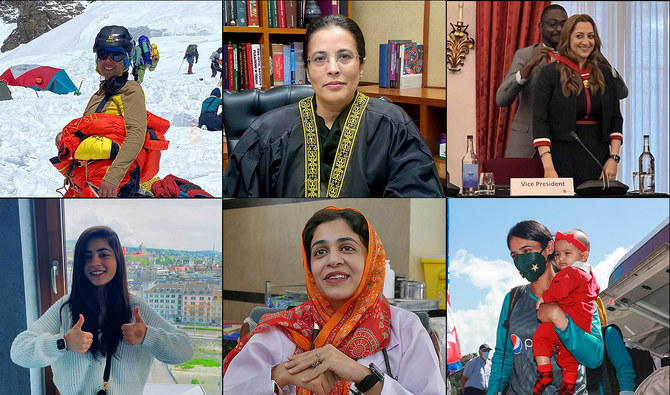KARACHI: Pakistani women, despite living in a conservative social context, have always made a mark by continuing to fight for their rights. As the world is progressing, more and more of them are standing out and making the country proud with their achievements both at home and abroad. Whether it is in the field of sports, politics, corporate sector or arts, women of this country have got what it takes to be the best in their respective fields. To honor them and laud their accomplishments, Arab News has put together a list of Pakistani women who set new benchmarks during the outgoing year.
Justice Ayesha A. Malik
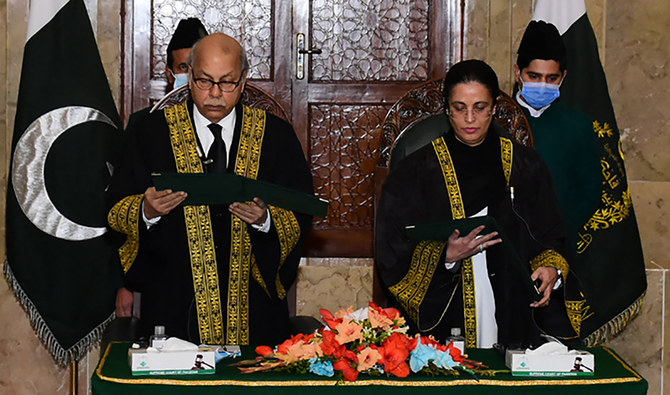
This handout photograph taken on January 24, 2022 and released by the Pakistan’s Press Information Department (PID) shows chief justice Gulzar Ahmed (L) administering the oath to justice Ayesha Malik as Pakistan's first female supreme court judge in Islamabad. (Photo courtesy: AFP)
Justice Ayesha A. Malik became the first woman in Pakistan’s 75-year history to be appointed as a Supreme Court judge. Earlier this month, she made it to the British Broadcasting Cooperation’s list of 100 inspiring women from around the world, the only one from Pakistan to be named in the 10th edition of the list.
Prior to her elevation to the country’s top court, Malik had been serving as a judge of the Lahore High Court since March 2012. Last year, she issued a landmark judgment, outlawing the use of invasive tests for women in rape cases. The Punjab and Sindh administrations issued orders to stop the humiliating practice in the wake of Malik’s ruling.
Sarooj Sajid Hussain
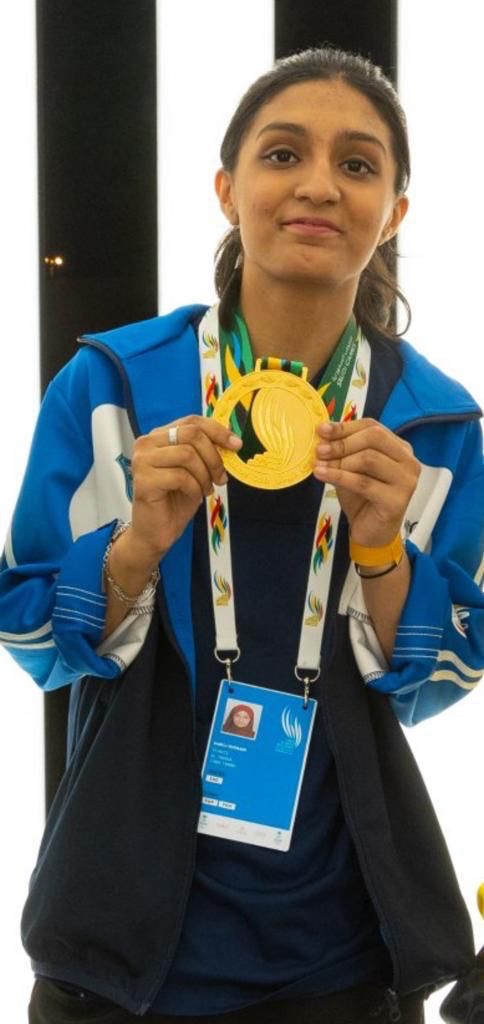
Pakistani expatriate Sarooj Sajid Hussain poses with her gold medal at the Saudi Games in Riyadh, Saudi Arabia, on November 7, 2022. (Courtesy: Sajid Hussain)
Young Pakistani athlete Sarooj Sajid Hussain made the country proud this year by winning a gold medal in table tennis at the Saudi Games.
“It is indeed an amazing feeling to win a gold medal at the Saudi Games,” the 16-year-old told Arab News in a telephonic interview after her victory.
Her next aim, she said, was to represent Pakistan and win medals for the country in the Olympics and other international competitions.
The Pakistani expatriate started playing table tennis at the age of seven and won three medals in different competitions in the Kingdom prior to her achievement in 2022. Hussain represented the army in Pakistan and also won medals at various national competitions.
Dr. Tasnim Ahsan
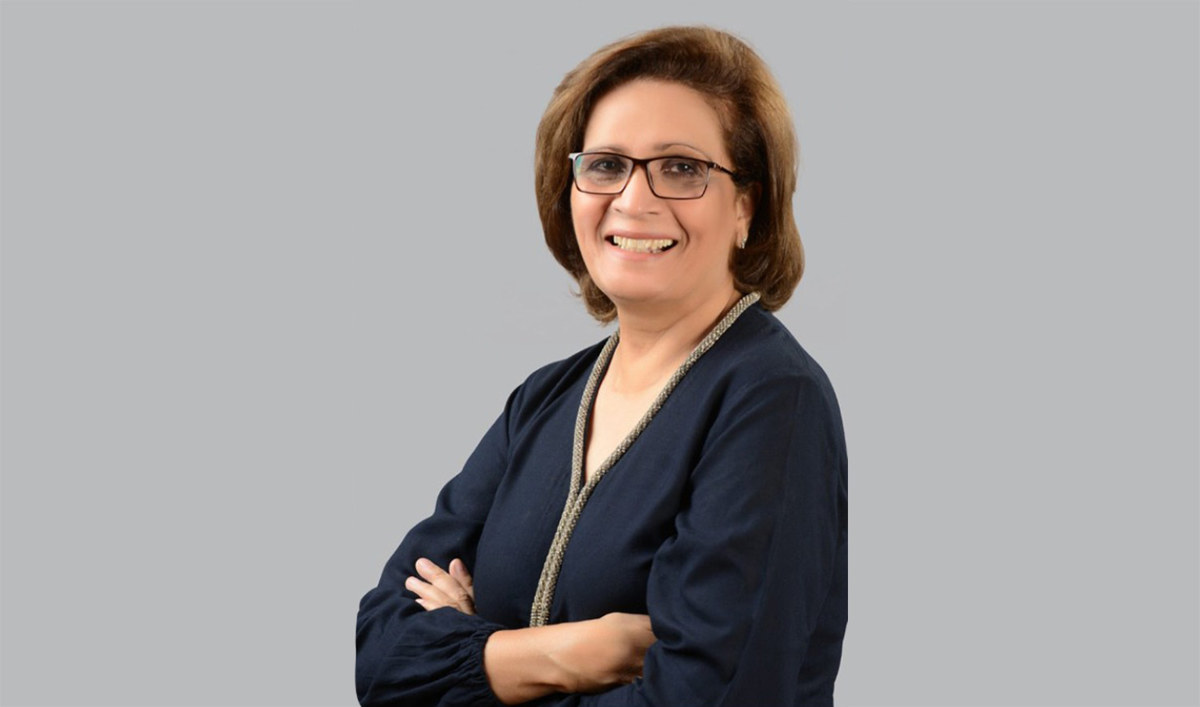
Dr. Tasnim Ahsan became the first Pakistani woman to receive the prestigious Endocrine Society's Laureate Award for 2023. (Courtesy: Endocrine News)
Akin to other fields, Pakistani women also proved their mettle in science, technology, engineering and mathematics (STEM). Dr. Tasnim Ahsan became the first Pakistani woman to receive the prestigious Endocrine Society’s Laureate Award for 2023.
The Karachi-based doctor was one of the 12 medical experts honored with the title this year. She was selected for the “International Excellence in Endocrinology Award” for her achievements and contributions to the field of treating hormone-related diseases.
The internationally acclaimed endocrinologist, who has over two decades of experience in the field, has mentored over 100 internal medicine physicians and continues to supervise specialist training in endocrinology and diabetes. At present, she is the secretary of the faculty of endocrinology at the College of Physicians and Surgeons in Karachi.
Hina Rabbani Khar
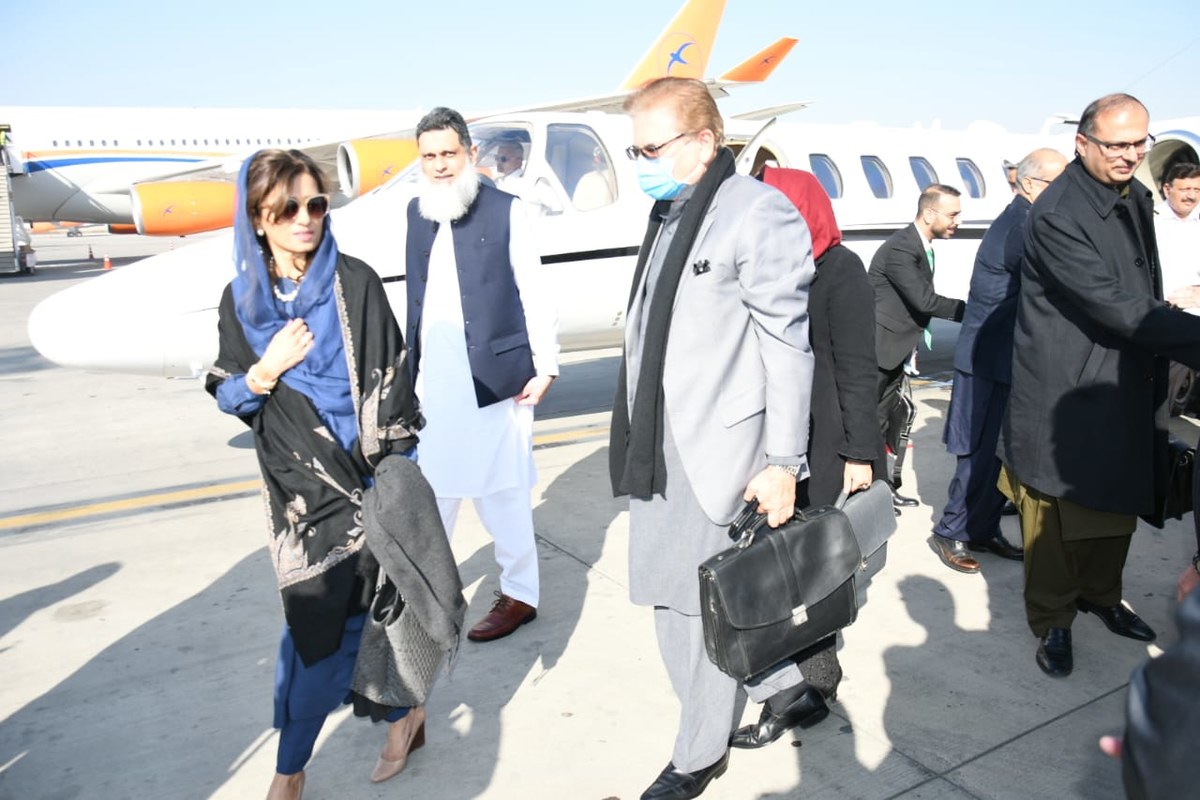
Pakistan's State Minister of Foreign Affairs Hina Rabbani Khar reaches Afghanistan to hold political consultations with her Afghan counterpart Amir Khan Mutaqqi in Kabul on November 29, 2022. (Courtesy: Twitter/MOFA)
Pakistan’s Minister of State for Foreign Affairs Hina Rabbani Khar became the first female official to visit Kabul since the government of Prime Minister Shehbaz Sharif took over in April 2022. She held political consultations with the interim Afghan foreign minister Amir Khan Muttaqi in November 2022.
Videos and photos of Khar’s trip received a lot of appreciation on social media, particularly from the likes of foreign minister Bilawal Bhutto-Zardari and filmmaker Sharmeen Obaid-Chinoy.
In 2011, she became the first female foreign minister of Pakistan as well as the youngest person to hold the position at the age of 33.
Dr. Mahwish Sharif
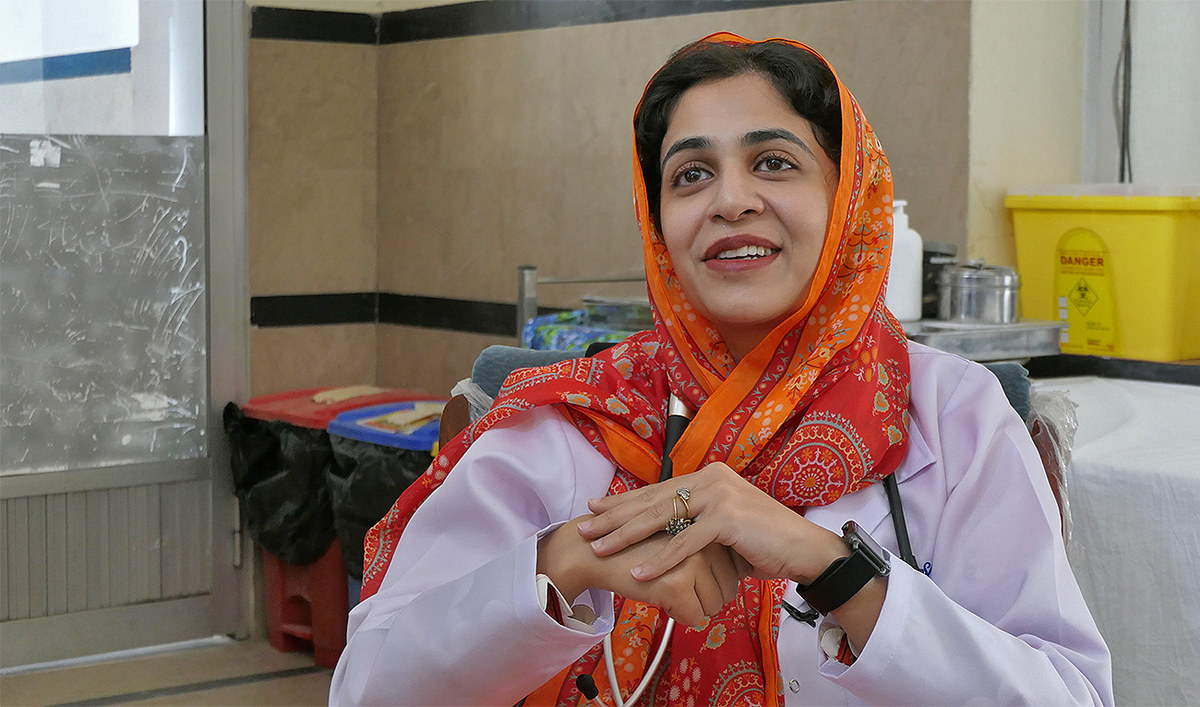
Balochistan's first deaf doctor, Dr. Mahwish Sharif, sits in her office at the Fatima Jinnah General & Chest Hospital in Quetta, Pakistan, on May 25, 2022. (AN Photo)
Pakistan’s Dr. Mahwish Sharif became the first deaf doctor in Balochistan and joined the tuberculosis ward at the Fatima Jinnah General & Chest Hospital, Quetta, in May 2022. Sharif, who lost her hearing at the age of four, overcame years of prejudice to finish medical school and be appointed as a doctor. The 25-year-old medical practitioner belongs to a remote village in the central Balochistan district of Kachi.
“Mahwish has become a role model for our society where persons with disabilities are even marginalized by their own family members,” Dr. Sadiq Baloch, the medical superintendent at the hospital, told Arab News in an earlier interview. “She has set a new precedent that people with disabilities can also fulfill their dreams.”
Ayla Majid
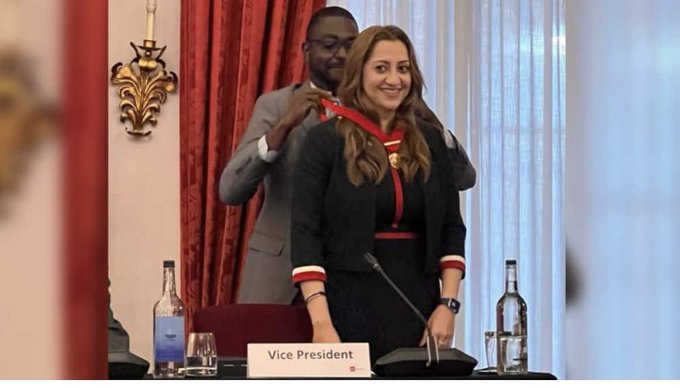
Ayla Majid gets appointed as Vice President of the Association of Chartered Certified Accountants (ACCA) on November 16, 2022. (Courtesy: Zahid Hafeez Chaudhri/Twitter)
Pakistan’s Ayla Majid became South Asia’s first woman to be appointed vice president of the Association of Chartered Certified Accountants (ACCA) in November 2022. This was a first in the 118-year history of ACCA.
“For Ayla, promoting the role of women in governance is something she is very passionate about,” ACCA Pakistan wrote on their official Twitter account. “Ayla is a champion of board diversity and actively engages in promoting women on boards. She was the first female to sit on the board of any stock exchange in Pakistan.”
Majid, who is the founder and CEO of clean energy and sustainability advisory practice “Planetive,” joined ACCA in 2006 and has been serving the global council since 2014.
Samina Baig

Pakistani female mountaineer Samina Baig poses at base camp 3 in K2 Pakistan, July 2022. (Samina Baig/Instagram)
Pakistani female mountaineer Samina Baig became the first woman from Pakistan to summit the world’s second-highest peak, K2, in July 2022. So far, fewer than 20 women from across the globe have summited the mountain due to its difficult terrain. For about every five people who have tried to scale K2, one has died while making the attempt.
Born in Gilgit-Baltistan, Baig is also the first Pakistani woman to climb Mount Everest and the Seven Summits. She was awarded the government’s “Pride of Performance” award following her successful summit of the Everest in 2013. Baig was also appointed to serve as an adviser on tourism, sports, and culture for Gilgit Baltistan’s chief minister last year.
Bismah Maroof
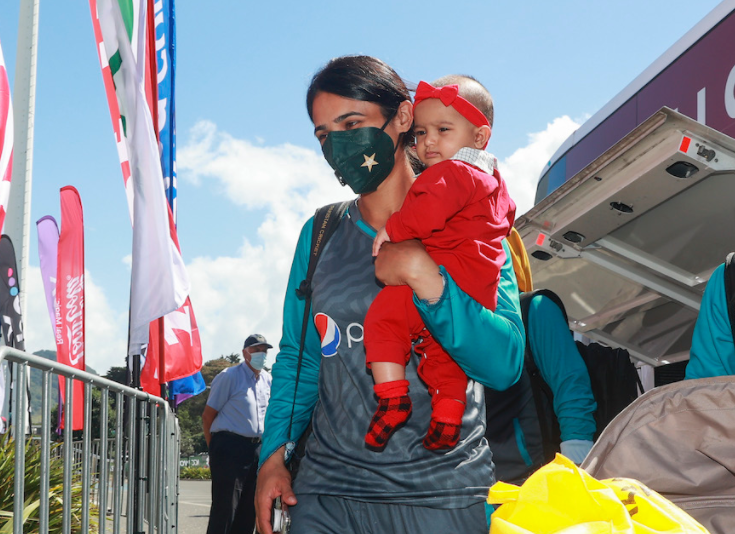
Pakistan's Women's Cricket Team captain Bismah Maroof arrives with her six-month-old at the stadium during Pakistan vs India ICC Women’s World Cup match in March 2022. (ICC/Twitter)
Pakistan’s women’s cricket team captain Bismah Maroof was conferred the prestigious Tamgha-e-Imtiaz, the fourth-highest civilian award in the country, on the 75th Independence Day of the country. In June 2022, she became known for scoring the highest number of runs for the women’s cricket team across both the ODI and T20I formats.
Maroof also made headlines when she arrived at the stadium during Pakistan vs India ICC Women’s World Cup match with her six-month-old in her arms. Even though the Women in Green lost the ICC Women’s World Cup match against India, her photograph with her child went viral on social media, with users appreciating the skipper for striking a perfect work-life balance by looking after her baby and being dedicated to her profession simultaneously.
Shafiqa Iqbal
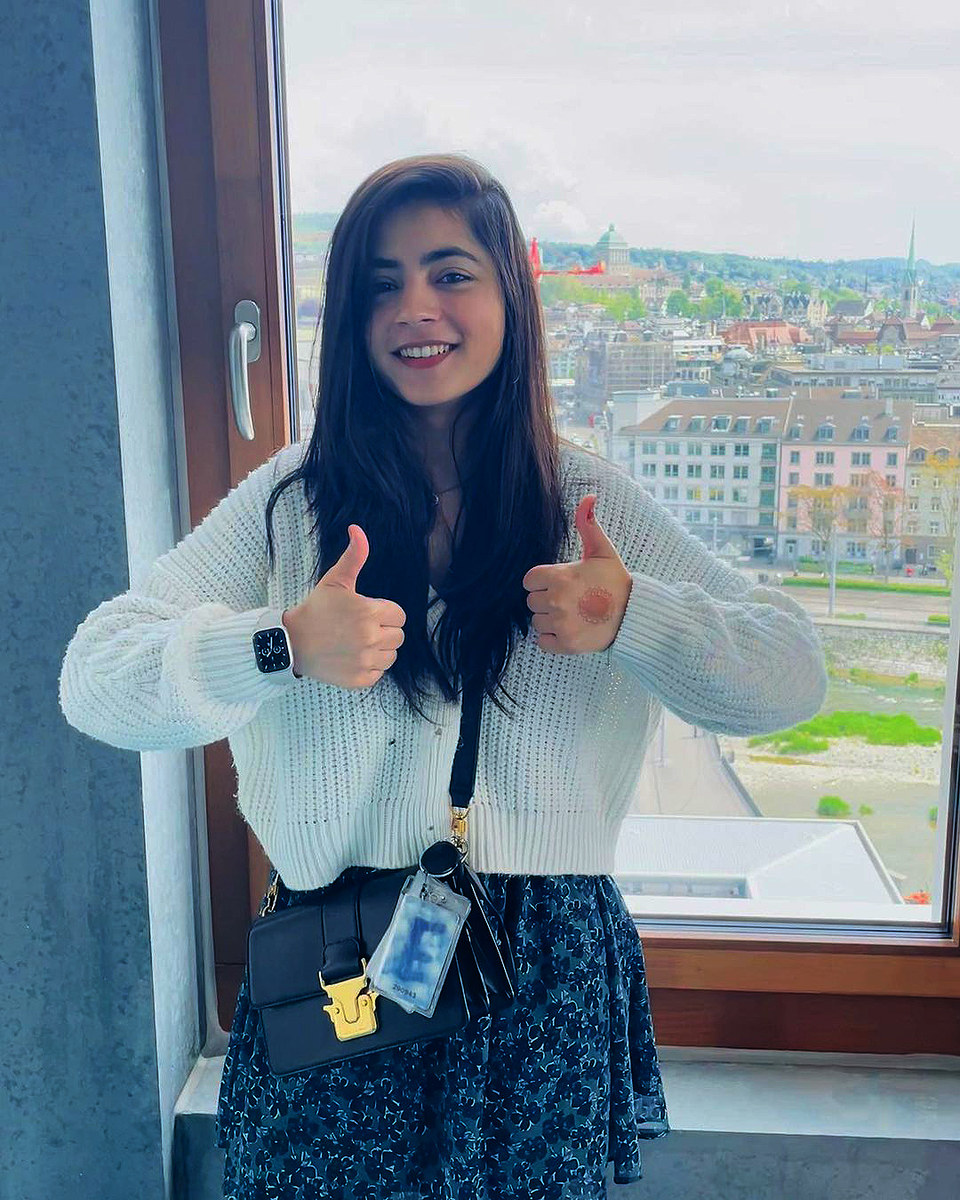
Data Engineer Shafiqa Iqbal spends Eid ul Fitr in Zurich, Switzerland, in May 2022. (Shafiqa Iqbal/Instagram)
Data engineer Shafiqa Iqbal, 24, joined Google Poland’s office in Warsaw this year. She was reported to be the only Pakistani who was hired from a pool of 1,300 candidates.
Iqbal graduated from the Punjab University and was working as a data engineer in Lahore before she was employed by Google through LinkedIn.
She was participating in open-sourced projects like blogging about data engineering while working in the field herself.
The engineer also worked as a top-rated seller at Upwork while representing Pakistan as the Global Ambassador of Women in Tech. She boasts of expertise in backend development, database migrations and development, ETL pipelines, cloud solutions, and logical programming.
Hina Shoaib
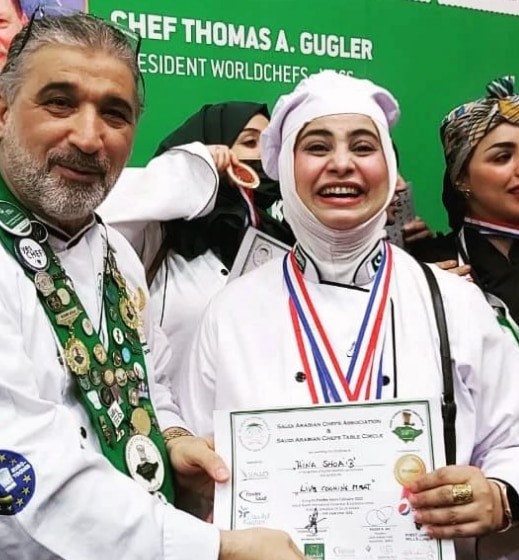
Pakistani chef Hina Shoaib receives a bronze medal and certificate after securing the third position at the International Chef Competition held in Jeddah in the first quarter of 2022. (Photo courtesy: Hina Shoib)
Pakistani chef Hina Shoaib secured third position in an International Chef Competition held in Jeddah in the first quarter of 2022, becoming the first woman from her country to bag the award and was honored with the bronze medal and certificate by senior chefs, Thomas Gugler and Daniel Meyer.
Shoaib presented her dishes at the Pakistan Pavilion at the competition that impressed all judges. Her kabab paratha recipe and the accompanying sauce were particularly praised at the international competition.


